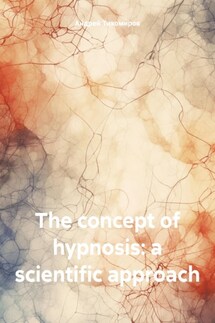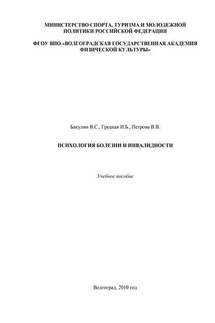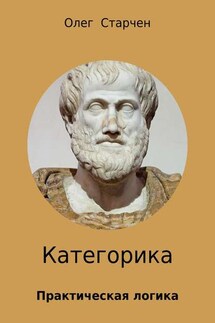People have been entering a hypnotic type of trance for thousands of years. In many cultures and religions, this has been seen as a form of meditation. The magicians of Persia and the yogis of India have practiced hypnosis for thousands of years for religious purposes, plunging themselves into an ecstatic trance with every movement of their finger. by keeping your gaze fixed on the tip of your own nose; obviously, there is no need for exoteric exposure to cause the phenomenon of Mesmerism. The main purpose of all these processes is to develop a habit of abstraction or concentration of attention, in which the subject is completely absorbed in one idea or chain of ideas, while he is unaware or indifferent to any other object, goal or action. The earliest record of a description of a hypnotic state can be found in the writings of Avicenna, a Persian physician who wrote about "trance" in 1027. Modern hypnosis originated in the late 18th century and became popular thanks to Franz Mesmer, a German physician who became known as the father of "modern hypnosis". At that time, hypnosis was known as "Mesmerism", named after Mesmer. He was of the opinion that hypnosis is a kind of mystical force that flows from the hypnotist to the hypnotized person, but his theory was rejected by critics who argued that there is no magical element in hypnosis.
There are various theories explaining hypnosis and related phenomena. Altered state theories view hypnosis as an altered state of consciousness or trance characterized by a level of awareness different from the normal state of consciousness. On the contrary, non-governmental theories view hypnosis in different ways as a placebo effect, a redefinition of interaction with a therapist, or a form of imaginative role-playing.
Hypnosis-based treatments for irritable bowel syndrome and menopause are supported by evidence. The use of hypnosis to treat other problems has produced mixed results, for example, when quitting smoking. The use of hypnosis as a form of therapy for the recovery and integration of early trauma is controversial in the scientific mainstream. Research shows that human hypnosis can contribute to the formation of false memories, and that hypnosis does not help people recall events more accurately.
Hypnosis is a peculiar, sleep—like state of man and higher vertebrates, which is based on the phenomena of inhibition of the higher parts of the brain. Up to the 60s of the 19th century, ideas about hypnosis were based on spiritualistic assumptions of special "fluids" or magnetic waves – special currents allegedly propagated by the hypnotist. Mystical ideas about hypnosis were destroyed by the works of Russian (V. M. Bekhterev, O. O. Mochutkovsky, A. A. Tokarsky, etc.) and French (N. Bernheim and J. Charcot) scientists. The names of these scientists are associated with the beginning of the scientific development of the problems of hypnotic states. They established the therapeutic value of hypnosis, and also clarified the special role of suggestion as a method of using the psychological factor for therapeutic purposes. However, there was still a lot of mystery about the phenomena of hypnosis. In particular, hypnosis and suggestion were mistakenly confused. Proponents of the psychological direction still continue to adhere to Bernheim's outdated and incorrect position that "there is no hypnosis, there is only suggestion, suggestion is autosuggestion." Meanwhile, the phenomena of hypnosis and suggestion are different: if the state of hypnosis is characteristic of both humans and animals, then susceptibility to verbal suggestion is a property of only the highest human nervous activity. The physiological side of suggestion found its explanation in the teachings of I. P. Pavlov on the signaling function of the large hemispheres, on the interaction of the first and second signaling systems in the higher nervous activity of man.
I. P. Pavlov and his students, carefully studying hypnosis in animal experiments and observations of people in the clinic, gave a scientific justification for the phenomena of hypnosis, which dealt a decisive blow to the generally accepted subjective psychological understanding of hypnotic states at that time. The theoretical basis for this has already been prepared by I. M. Sechenov's teaching on the central inhibition of the underlying parts of the nervous system by the brain. At the heart of the hypnotic state, according to the teachings of I. P. Pavlova, there is a process of inhibition that develops in the form of partial cortical sleep, due to the fractional and uneven spread of inhibition over the surface of the cerebral cortex. This spatial limitation of the irradiation and intensity of the inhibition process is the main difference between hypnotic sleep and natural, normal sleep, in which inhibition covers the entire cerebral cortex (descending to the underlying subcortical formations). With this partial inhibition, separate foci of arousal are usually preserved – "watchtowers", as Pavlov called them, which provide the possibility of communication between the hypnotized and the hypnotizing. Thus, a person in a state of hypnosis, as if isolated from all external stimuli, perceives verbal suggestion. The enormous meaning of the word, as the most typical conditioned stimulus for a person, was highlighted by I.P. Pavlov. He pointed out that the word of a hypnotist, on the one hand, causes a diffuse inhibition in the brain, on the other hand, concentrates irritation in a certain area of the cerebral cortex. This eliminates the competing effects of all other external stimuli.














